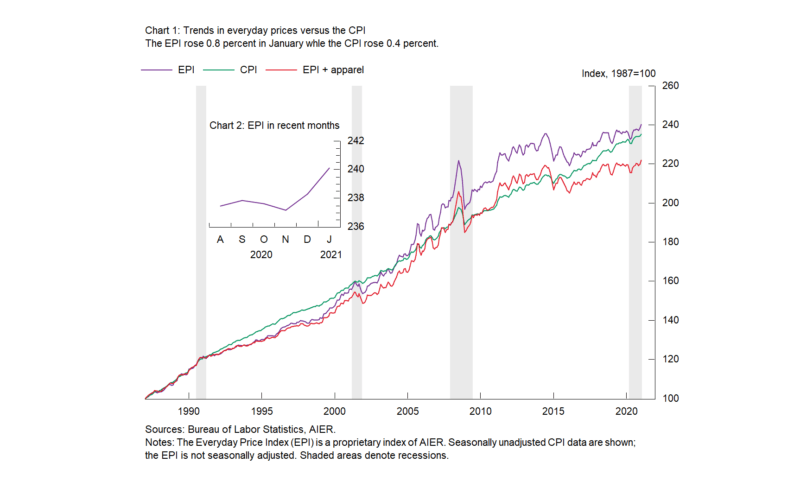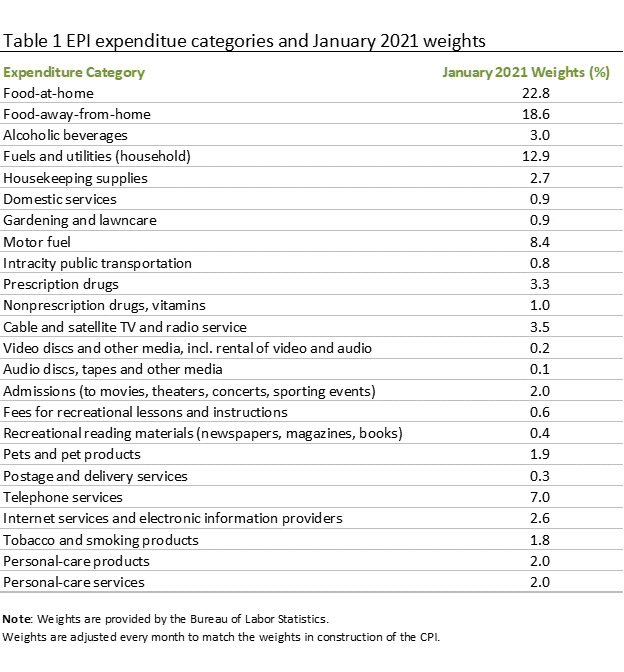Crude Oil Surge Drives Everyday Prices Higher in January
Motor fuel accounts for 8.4 percent of the AIER Everyday Price Index, the fourth largest component in the index. Because motor-fuel prices tend to be extremely volatile, primarily driven by the price of crude oil, motor fuel prices are often the biggest contributor to the monthly change in the Everyday Price Index. That is true in January.
Motor fuel prices jumped 6.9 percent on a seasonally unadjusted basis (the Everyday Price Index is calculated on an unadjusted basis) in January, contributing 56 basis points to the 0.8 percent increase in the Everyday Price Index. The result follows a 0.5 percent increase for the Everyday Price Index in December when gasoline prices rose 3.4 percent and contributed 29 basis points. Over those two months, crude oil prices rose 6.7 percent in December and 7.9 percent in January (and are up 11.7 percent in early February suggesting energy prices might drive the Everyday Price Index up again this month).
Along with the jump in motor fuel prices, household fuels and utilities (12.9 percent weight in the Everyday Price Index) added 9 basis points, food at home (22.8 percent weight) added 8 basis points, and food away from home (18.6 percent weight) contributed 0.6 basis points. The largest negative contribution came from admissions prices (2.0 percent weight), with a -12 basis-point contribution.
The Everyday Price Index including apparel, a broader measure that includes clothing and shoes, rose 0.9 percent in January after increasing 0.3 in December. Apparel prices rose 2.9 percent on a not-seasonally-adjusted basis in January following a 1.9 percent decline in December. From a year ago, apparel prices are off 2.5 percent.
The Consumer Price Index, which includes everyday purchases as well as infrequently purchased, big-ticket items and contractually fixed items, rose 0.4 percent on a not-seasonally-adjusted basis in January. Over the past year, the Consumer Price Index is up 1.4 percent while the Everyday Price Index is up 1.4 percent and the Everyday Price Index including Apparel is up 1.1 percent.
For the Consumer Price Index excluding food and energy, the index rose 0.2 percent for the month (not seasonally adjusted) while the 12-month change came in at 1.4 percent. Within the core, core goods prices were off 0.5 percent in January and are up 1.7 percent from a year ago while core services prices rose 0.1 percent for the month and are up 1.3 percent from a year ago.
Note: The Everyday Price Index for January is based on incomplete data due to restrictions on data collection by Bureau of Labor Statistics personnel because of the Covid-19 pandemic.








